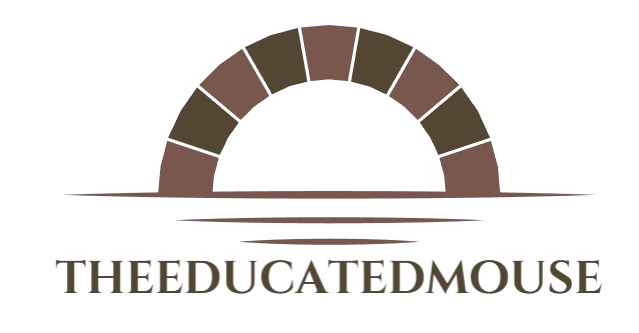Middle school is a time of transformation—both profound and perplexing. It’s a developmental limbo, where students are no longer children, not yet teens. Their brains and bodies are reshaping themselves rapidly, often in confusing and emotionally charged ways. As a long-time middle school educator, I’ve come to view this stage as a kind of metamorphosis—not the caterpillar or butterfly, but the gooey, formless stage in the cocoon. And with transformation comes struggle.
This is precisely why middle school is a crucial time for academic, behavioral, and emotional intervention. A well-structured Multi-Tiered System of Supports (MTSS) can serve as the backbone of this support, helping students through these transitional years with flexibility, empathy, and structure.
Why Middle School Needs MTSS
Middle schoolers are a unique breed. They are impulsive, highly social, and deeply affected by their environment. The Association for Middle Level Education emphasizes that what happens during these middle years significantly shapes students’ futures. Therefore, it makes sense to build systems that recognize and respond to their diverse and evolving needs.
MTSS is one such system. It’s not just a program or policy—it’s a mindset. It acknowledges that academic success doesn’t happen in isolation from social and emotional development or behavior. Instead, these areas are interwoven, and effective support must address them all in tandem.
However, implementing MTSS at the middle school level presents unique challenges. Subject-specific silos, rigid schedules, and resource constraints can all act as barriers. But with thoughtful planning and a commitment to collaboration, schools can weave MTSS into the daily fabric of middle school life.
Core Elements of MTSS in Action
The most successful middle schools with MTSS in place share certain characteristics. Drawing inspiration from exemplary campuses in the Schools to Watch network and principles outlined in The Successful Middle School: This We Believe, we can outline essential features that any school can begin to adopt:
- Flexible Scheduling for Targeted Support: At the elementary level, scheduling intervention periods is often simpler. In middle school, carving out time—such as a WIN (What I Need) period—requires a creative rethinking of the master schedule. Yet, when executed well, this time allows students to receive targeted help or enrichment based on their current needs.
- Student Voice and Participation: Giving students a seat at the table through committees, feedback panels, or decision-making councils increases their sense of belonging and responsibility. This also helps educators understand student perspectives and tailor supports more effectively.
- Data-Informed Decisions: While standardized assessments remain part of the system, they shouldn’t be the only metric. Authentic, engaging, and real-world assessments—such as portfolios, service-learning, and project-based tasks—offer richer insights into a student’s growth and learning needs.
- Collaborative Staff Mindset: A successful MTSS requires that all adults on campus—teachers, administrators, counselors, and support staff—buy into the philosophy that every student can succeed with the right supports. Everyone plays a role.
A Day in the Life: MTSS at Work
Let’s imagine a typical day in a school with a functional MTSS framework. It’s Wednesday, and during WIN time, students move to various stations based on their needs. Some go to a math support session led by a content teacher, others attend a study skills workshop facilitated by a counselor. Meanwhile, a group of students meet with their English teacher to refine their writing portfolios, while a few head to a quiet room for mindfulness and SEL support.
All of this is coordinated through data—screener results, teacher observations, and student self-reflections. Importantly, students also have a say in where they go, fostering agency and self-awareness. Staff collaborate to ensure no student falls through the cracks, even if their needs don’t fit into traditional academic categories.
In this model, MTSS is fluid, responsive, and dynamic. It’s not a one-size-fits-all solution, but rather a framework that respects the complexity of adolescence.
Barriers and Solutions
Of course, creating such a system doesn’t happen overnight. One of the biggest hurdles is shifting the culture from isolated responsibility to collective ownership. In many schools, intervention is still seen as the job of a specialist, not a shared duty. But MTSS requires everyone to pitch in—from general education teachers modifying instruction to administrators creating flexible scheduling structures.
Another challenge is logistics—particularly tracking attendance during flexible periods and ensuring every student receives the support they need. Some schools are experimenting with assigning students to quarterly “home base” rooms during WIN time, guided by data and adjusted as needed. These logistical decisions matter, and getting them right takes time, input, and iteration.
The MTSS Mindset: Understanding the Adolescent Brain
Ultimately, MTSS is rooted in understanding the adolescent experience. Middle schoolers are driven by emotion, prone to mistakes, and often lack the self-regulation needed to thrive without support. They have what researchers metaphorically call “great accelerators and terrible brakes.”
Recognizing this isn’t an excuse—it’s an opportunity. When educators learn about brain development, equity, and culturally responsive teaching, they become more equipped to offer effective support. Strong relationships, clear expectations, and empathy go a long way.
In truth, even something as simple as getting a student to smile can be part of a Tier 1 intervention. A positive connection may not show up in test scores, but it’s foundational to creating an environment where students feel safe enough to learn.
Final Thoughts: Moving the Needle
Middle school is a pivotal time. A thoughtful, inclusive, and flexible MTSS can guide students through it—not by eliminating challenges, but by equipping them to meet those challenges with support and resilience.
Change takes time, but it doesn’t require perfection from the outset. Start with small, meaningful steps. Build consensus. Experiment. Reflect. And above all, trust that your students—no matter how messy the cocoon—are becoming something extraordinary.
When every adult in the building embraces this journey, the outcomes extend far beyond the classroom. They shape the future.





